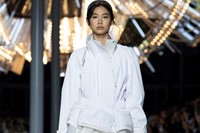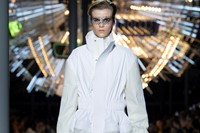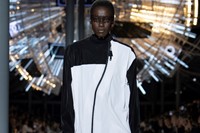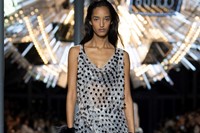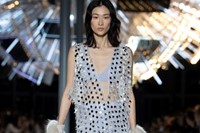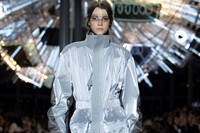Ten years ago, Nicolas Ghesquière made his much-anticipated debut as creative director of Louis Vuitton. And Tuesday evening, to the day, he staged a spectacular, celebratory anniversary show to an audience of over four thousand – ranks swelled by global employees of, probably, the largest luxury goods brand on the planet. What they and we witnessed was a tour de force demonstration of full-throttle fashion, whirling through both Ghesquière’s decade-long Vuitton design history (that word again – a thematic of the season for sure) and the house’s legacy to boot, on a fantastic voyage that, while by its very nature treading charted territory, nevertheless managed to thrill.
It was also a testament to how Ghesquière has established a recognisable, cohesive style at Vuitton, a language of clothes that evokes the house through the smallest details. It has its shouty Monograms and Damier checks for sure, as well as a trademarked roster of handbag silhouettes, but under Ghesquière Vuitton also has the subtle stuff, like a curved shoulder line, a buttoned strap across the chest, a specific cut of trouser, a zip detail, a leather trim. All that semaphores the house’s ID as adroitly as the boxy matellier-print pannier mini-dress worn by Mica Argañaraz. And that’s the truly difficult thing to nail – trunk pun unintended.
The other thing that fascinates about Ghesquière as a designer is his melding of recent and distant past with not even the now, but the next. This show began with Ghesquière going galactic, white and silvery sequinned dresses twisting and pocketing around the body like space suits (he must be annoyed Prada got to NASA first). He proposed those in glistening golden brocade, too – and it’s difficult to imagine anyone else doing so. But quickly it came back to Earth in designs that roamed through his back catalogue, and in doing so took in other great tranches of past fashion. Like all great futurists, Ghesquière is constantly drawing from the past – specifically a French past, come to think of it, whether that be the frock-costs of the Ancient Régime, 19th-century dandies or the prime of French haute couture. Which, for Ghesquière, happened during his childhood in the 80s – jewel-encrusted brocade jackets recalled the greatest hits of Yves Saint Laurent, something few designers would have either the talent or the chutzpah to invoke.
Ghesquière can, because he has his own greatest hits. Those frock coats are a notable inclusion, from his stellar spring 2018 collection – I chose one of them as the Dress of the Year that year for the Fashion Museum in Bath, because I loved his melding of history and sci-fi, the painstaking technique, the transposition of a man’s garment to womenswear. And also just because I thought it looked great. As did much of this collection, which had a hint of greatest hits but also pushed somewhere different. Those frock coats are a great example – instead of brocade, they came in raw-cut wool, elongated and slashed like carwash curtains to goal around the body. The panels were sometimes lined in a foiled, antiqued jacquard that only showed as the models walked.
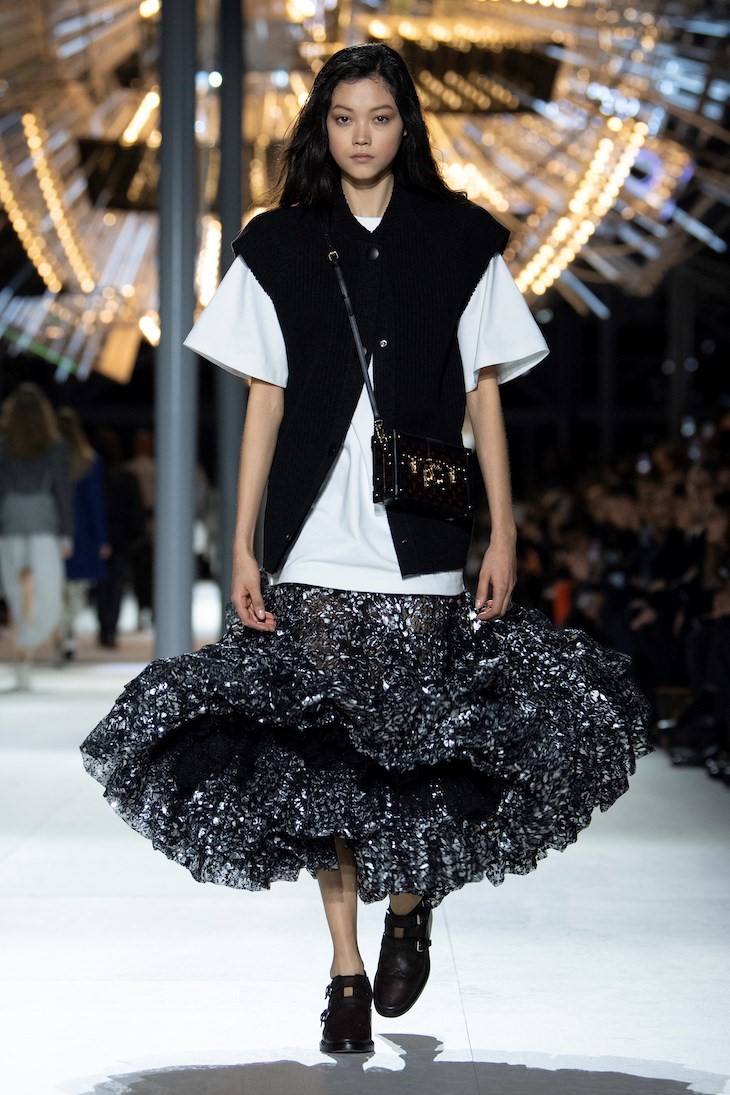
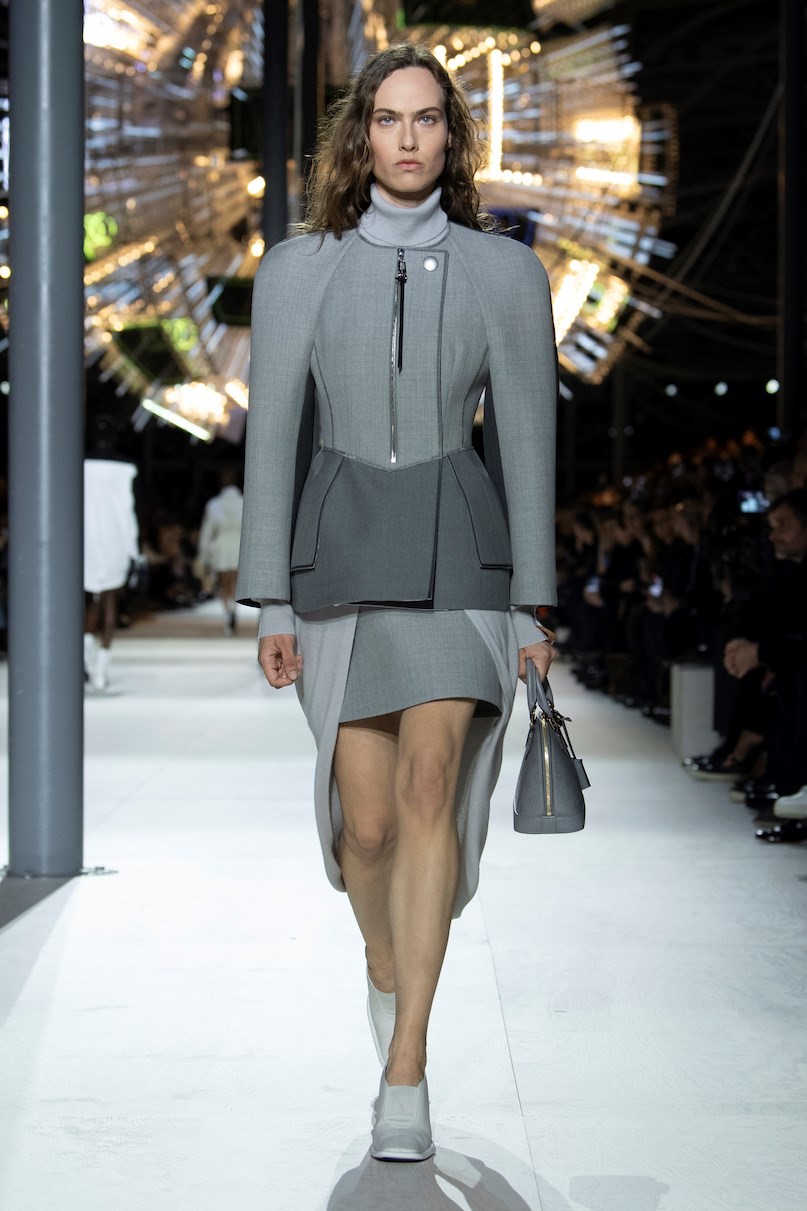
This collection, indeed, was made to be seen in dynamic motion, like the slashed dresses smothered with cut “feathers” of fabric that wrapped around the body, a riff on styles Ghesquière showed for Vuitton at a show in Brazil in 2016; like the pair of bouncing bouffant skirts that boomed out from the knees, a callback to the collection Ghesquière showed on the cusp of the Covid-19 pandemic. Ten years seems a long time in fashion; but it’s been an exceptional decade by any stretch.
In light of that, what I took away from this Louis Vuitton collection was the positivity of Ghesquière’s vision. The artist Philippe Parreno created a lunar landscape peppered with spiky chandeliers as the Vuitton show-set. It may have seemed austere and threatening to some eyes, but to Ghesquière and his clothes, it almost looked like home. Likewise, those clothes call back to the sixties, not stylistically but ideologically, to the idea of the future not as something foreboding to be feared but as a moment to come filled with possibility and opportunity. Something to look forward to. In a dark moment in time, we need thinkers like Ghesquière.

